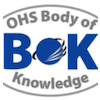Chapter 37: Introduction to ‘practice’ as a concept
Abstract
The OHS Body of Knowledge has described the technical requirements and knowledge base of an Occupational Health and Safety (OHS) professional. But there is a final, critical ingredient for a well-rounded, effective OHS professional, and that is the ability to influence.
First year of publication: 2012
Current Version Underview: 2012
Chapter 37: Introduction to ‘practice’ as a concept
Phil Turner BSc, MSc, GDipOccHyg, GDipOHM.
Vice President HSE, Rio Tinto Alcan
Phil has over thirty years experience in industrial OHS roles in mining, offshore petroleum, shipbuilding and railways. He is currently Vice President HSE for Rio Tinto Alcan. Since joining Rio Tinto in 2001, Phil has been the global practice leader sustainable development assurance; general manager HSE for Rio’s iron ore business in Canada; and general manager safety in the Rio’s corporate group. Phil has held corporate and business safety and health roles in North Limited, BHP Petroleum, and Ranger Uranium Mines. Phil has also held occupational hygiene roles in railways, ship building, tyre manufacturing and chemicals manufacture. He has substantial involvement in risk management, systems implementation, occupational hygiene, radiation protection, and performance auditing.
The OHS Body of Knowledge takes a conceptual approach which enables it to be applied in different contexts and frameworks.
To optimise its value for education and professional development learning outcomes have been developed for each technical chapter in the Body of Knowledge.
The learning outcomes as described give an indication of what should be the capabilities of an OHS professional; it is up to those developing OHS education programs, OHS professionals planning their CPD or recruiters or employers selecting or developing people for the OHS function to consider the required breadth vs. depth .
Please read the section on using the learning outcomes before delving into the leaning outcomes of the individual chapters.
The numbers against each learning outcome refer to the chapter number of the BOK download page. No learning outcomes have been developed for the chapters considered introductory or underpinning knowledge (that is chapters 1, 2, 3, 4, 5, 6, 7, 1, .13, 14, 15.)
Podcasts
Safety of Work Podcast: Ep 36: How do we tell the difference between theories and fads in safety?
This podcast draws on management theory to discuss recent changes in the spread of ideas, where new management techniques come from, how innovations get labeled, how messages often get broadcast, the acceleration and deceleration of broadcasting, why general ideas are more diffuse and the differences between academics, promotors, and researchers.
Date: 2020
Presenters: Drew Rae & David Provan
Source: https://safetyofwork.com/episodes/ep36-how-do-we-tell-the-difference-between-theories-and-fads-in-safety

